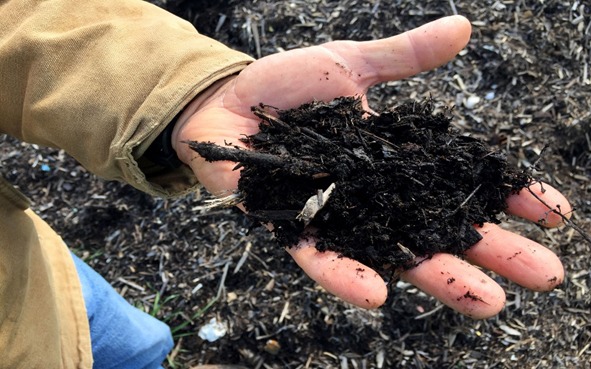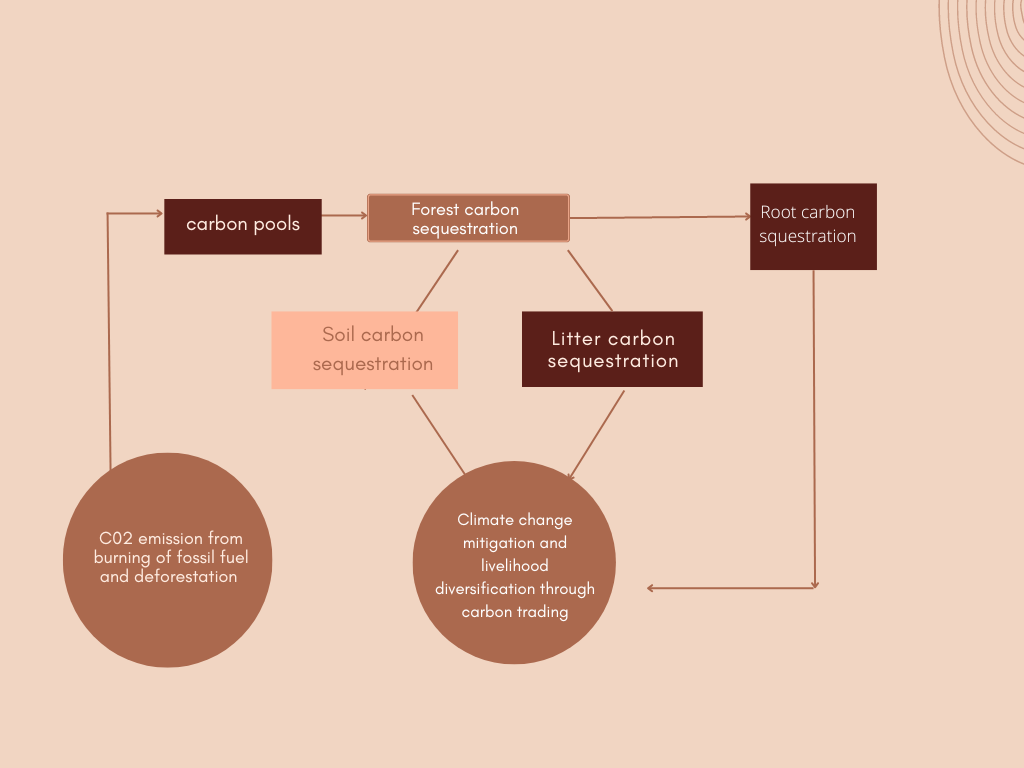Contact: +91 99725 24322 |
Menu
Menu
Quick summary: Discover how agriculture can help in the fight against climate change through soil carbon sequestration. Learn the benefits, principles, and practices of sequestering soil carbon for a sustainable future.

The phrase “carbon sequestration” refers to both unintentional and intentional activities that either remove CO2 from the atmosphere or divert it away from emission sources so that it can be stored in the ocean, terrestrial habitats such as vegetation, soils, and sediments, and geologic formations.
By lowering greenhouse gas emissions in the atmosphere, soil carbon sequestration can assist to lessen the effects of climate change. Soil carbon sequestration involves absorbing and storing atmospheric carbon dioxide (CO2) in soil.
According to IPCC, soil carbon sequestration has the potential to offset up to 5.5 billion tonnes of CO2 emissions annually.
In this blog post, we will explore the concept of soil carbon sequestration and its importance in the fight against climate change. To maximize the potential of soil carbon sequestration as a climate change mitigation approach, this post seeks to increase knowledge about the significance of sustainable land management practices and minimizing greenhouse gas emissions. Eventually, it is to stimulate increased awareness and action on the topic of climate change and to motivate people, organizations, and governments to move toward a more sustainable future.
CARBON CYCLE:
The carbon cycle, which controls the flow of carbon between the atmosphere, plants, and soil, is essential to soil carbon sequestration.
In the process of photosynthesizing, plants take in CO2 from the air and transform it into organic compounds like sugars that they can use for energy and expansion. These plants leave behind organic content that is decomposed by soil bacteria when they die or shed their leaves, branches, and roots. The remaining carbon is converted into stable forms of carbon and integrated into the soil during this process, with part of it being released back into the environment as CO2.

The organic component of soil is called soil organic matter (SOM) or soil carbon and it consists of soil microbes as well as remnants of plants and animals that have undergone various degrees of decomposition.
SOM is the biggest carbon reservoir in terrestrial ecosystems, storing three times as much carbon as plants and more than twice as much as the atmosphere.
The health of the soil: SOM is essential for the improvement of soil structure, water-holding capacity, and nutrient cycling. SOM is important for a range of ecosystem services beyond carbon sequestration, including soil fertility, water quality, and biodiversity.

Reduced atmospheric CO2 levels:
By storing carbon in the soil, soil carbon sequestration can significantly contribute to lowering atmospheric CO2 levels.
The advantages of soil carbon sequestration go beyond carbon storage; they also include benefits including enhanced soil productivity and improved soil health
More sustainable and fruitful agricultural systems and more resilient ecosystems can be supported by enhanced soil health and fertility brought on by soil carbon sequestration.
Soil carbon sequestration, which increases the amount of carbon stored in the soil, can help slow down global warming while also enhancing the fertility and health of the soil.
Increased agricultural productivity is one of the benefits of soil carbon sequestration. Soil carbon sequestration involves increasing the amount of soil organic matter (SOM) in the soil, which has numerous benefits for soil health and fertility, as well as crop productivity.
By improving soil health and fertility and supporting increased agricultural productivity, soil carbon sequestration can help to promote more sustainable and resilient agricultural systems, while contributing to global efforts to mitigate climate change.
Soil carbon sequestration can enable more sustainable and drought-resistant agricultural systems as well as more resilient ecosystems by improving water retention and drought resistance. Even in the face of climate change and other environmental stressors, this can help to create ecosystems that are more stable and productive.
Soil carbon sequestration protects soil health, enhances water quality, and supports more resilient and sustainable agricultural systems by lowering erosion and nutrient loss. This can assist to lessen the effects of climate change while enhancing the long-term health and productivity of ecosystems.
Reducing the level of soil disturbance caused by tillage activities is known as conservation tillage. This could enhance soil health, lessen soil erosion, and boost soil carbon sequestration.
An agricultural technique known as cover cropping is planting a cover crop, such as grasses or legumes, in fallow areas or in between growing seasons for income crops. Increases in soil organic matter, erosion control, and soil health can all be achieved with the use of cover crops.
Agroforestry is an agricultural technique where crops or animals are grown alongside trees and other perennial plants on the same plot of land. Among the many advantages of agroforestry are enhanced soil organic matter and carbon sequestration.
Because it influences the quantity and quality of organic matter that is integrated into the soil, nutrient management is a crucial component of soil carbon sequestration. The increase of soil organic matter that results from proper fertilizer management can aid in the storage of carbon in the soil.
Because it impacts the quantity and quality of organic matter incorporated into the soil, grazing management is a key component in soil carbon sequestration. Effective grazing management can help to increase soil organic matter, which can aid in the soil’s ability to sequester carbon.
It is important to increase awareness and technical knowledge about soil carbon sequestration among farmers, land managers, and other stakeholders. This can be done through education and outreach programs, as well as through partnerships with agricultural extension services and other organizations that work with farmers and land managers.
It is crucial to develop laws and financial rewards that encourage people to use methods that improve soil carbon storage. This can include financial support for technical assistance and research, as well as incentives like tax credits or subsidies for putting soil health practices into practice. To assist the adoption of practices that advance soil health and carbon sequestration, policies and regulations should also be modified.
It can be difficult to measure changes in soil carbon levels, especially over short periods. Within a field or even within a single soil profile, soil carbon levels can differ greatly, making it difficult to measure changes without expensive and delicate laboratory examination.
TraceX is helping companies track their sustainable practices with its Farm Management and Sustainability solutions. The Farm management software can help farmers track their progress towards carbon sequestration goals , monitor soil health and make informed decisions about land use and crop management. The various sustainable practices can be configured as a package of practices and tracked for progress and deviations.
The process of storing carbon in the soil, known as soil carbon sequestration, can help to lessen the effects of climate change. Among the many advantages of soil carbon sequestration are lower atmospheric CO2 levels, improved soil fertility and health, higher agricultural production, improved drought resistance and water retention, and decreased erosion and nutrient loss.
Conservation tillage, cover crops, agroforestry, nutrient management, and grazing management are a few techniques for storing carbon in the soil.
Despite these difficulties, it is crucial to keep up practices that support soil health and carbon sequestration since they have the potential to result in significant long-term carbon sequestration in the soil. We can aid in reducing the effects of climate change and advancing sustainable agricultural and land management methods by encouraging soil carbon sequestration.
